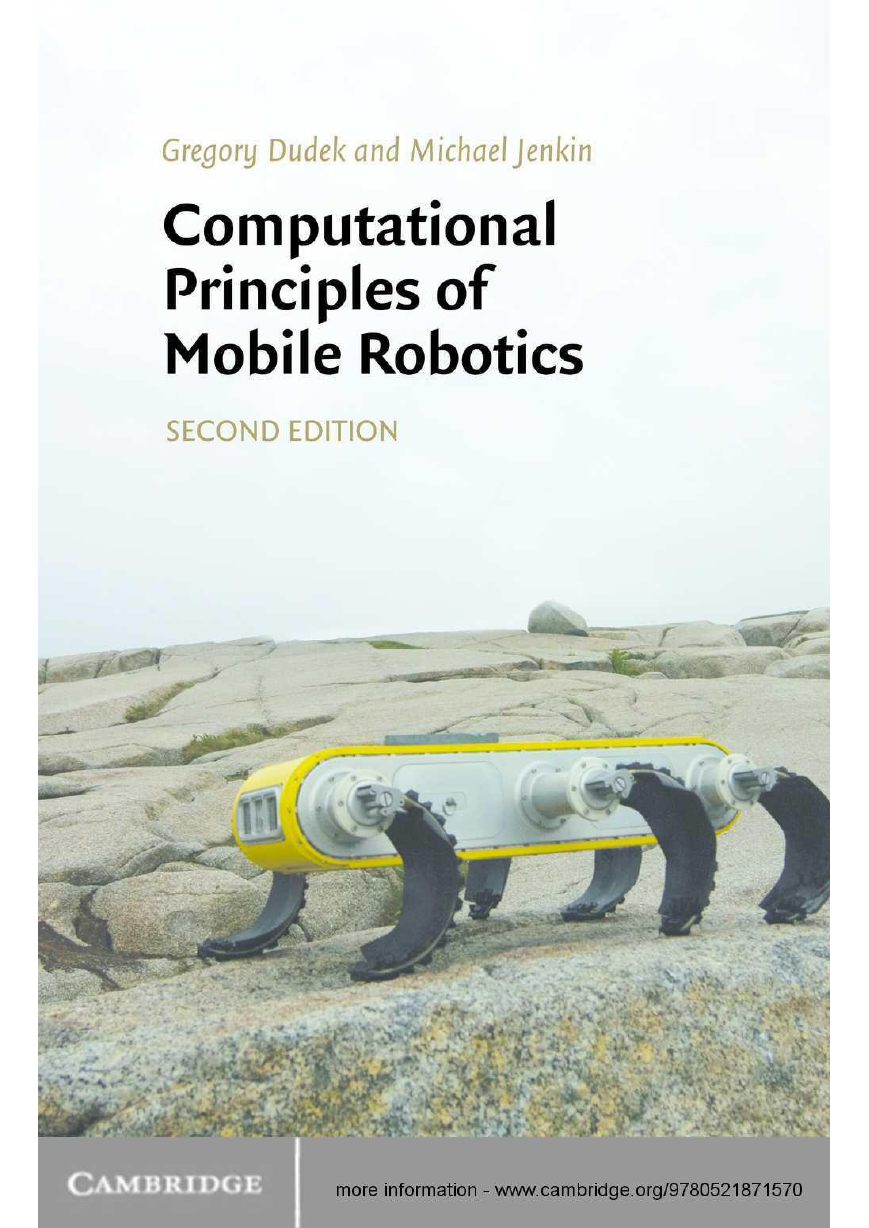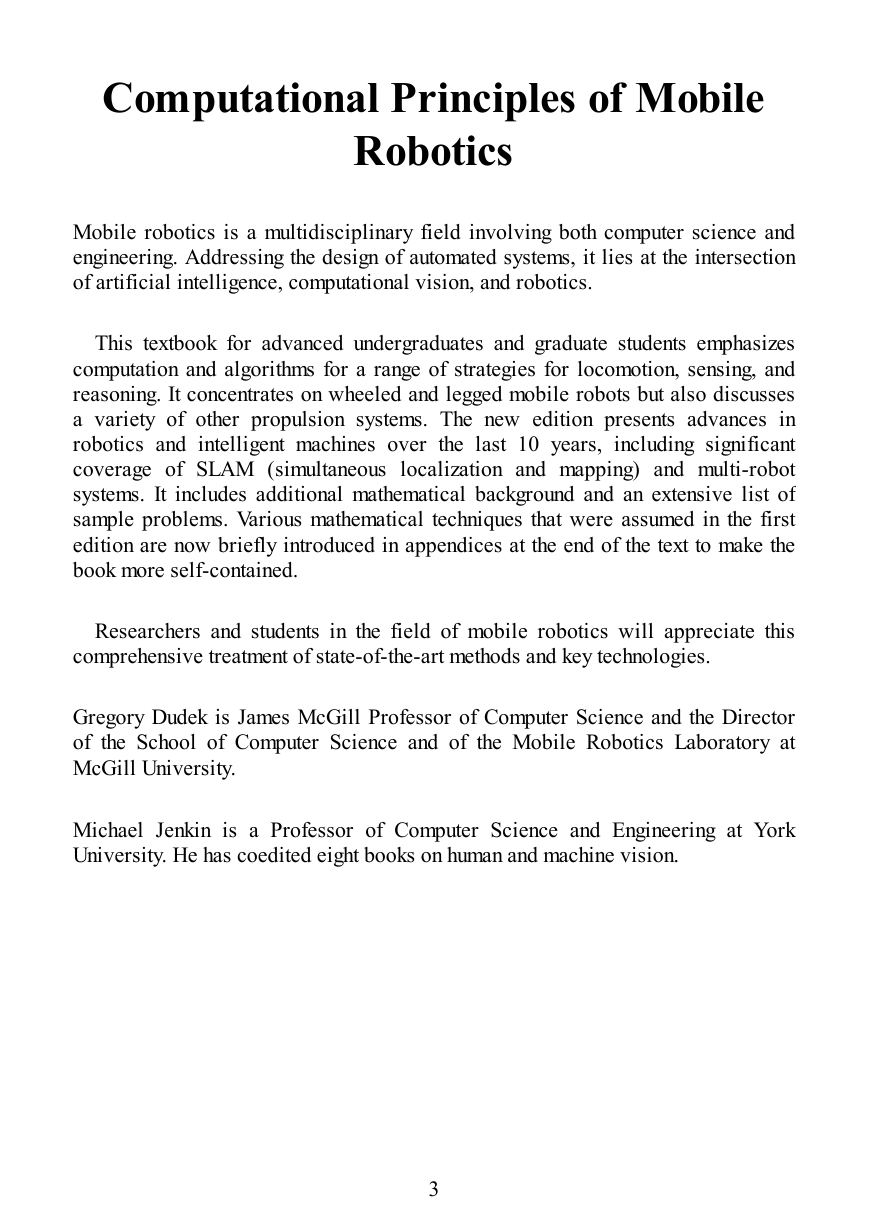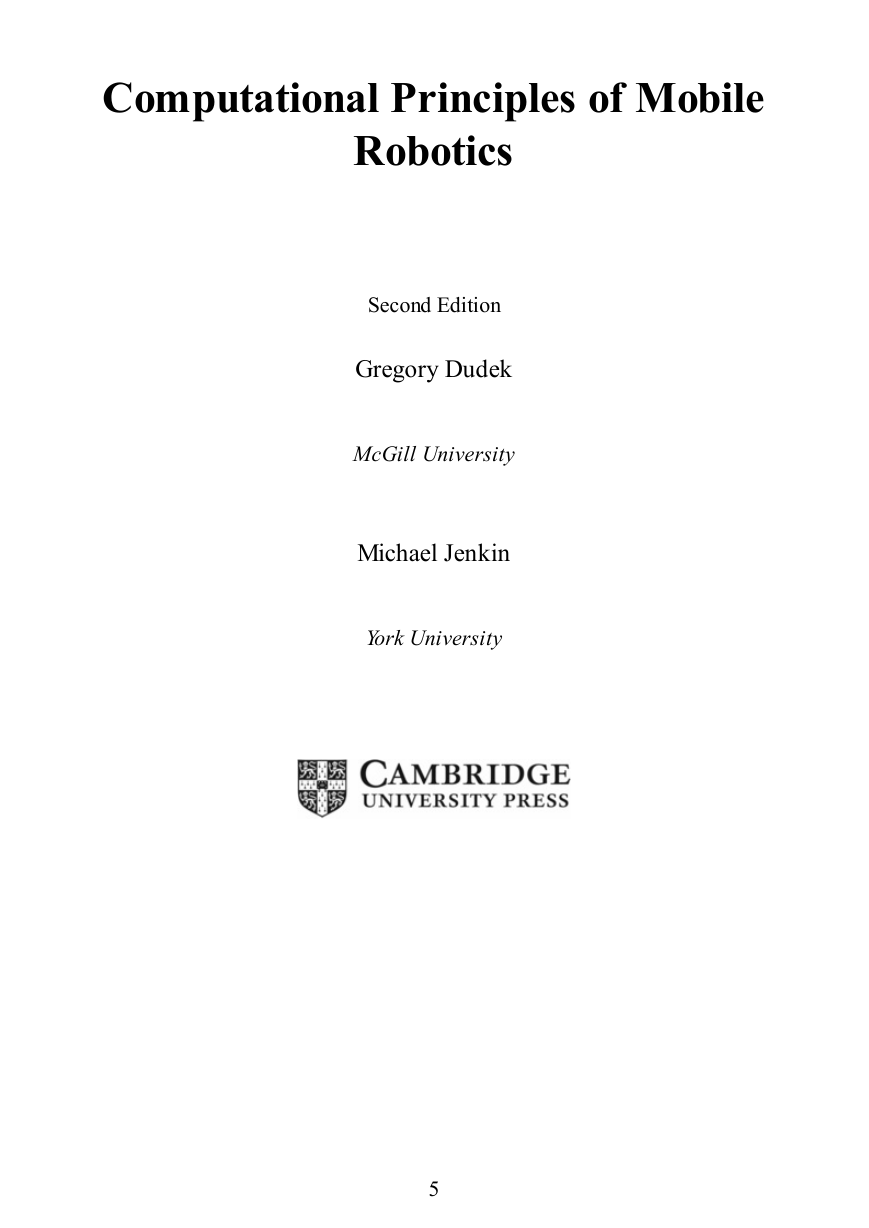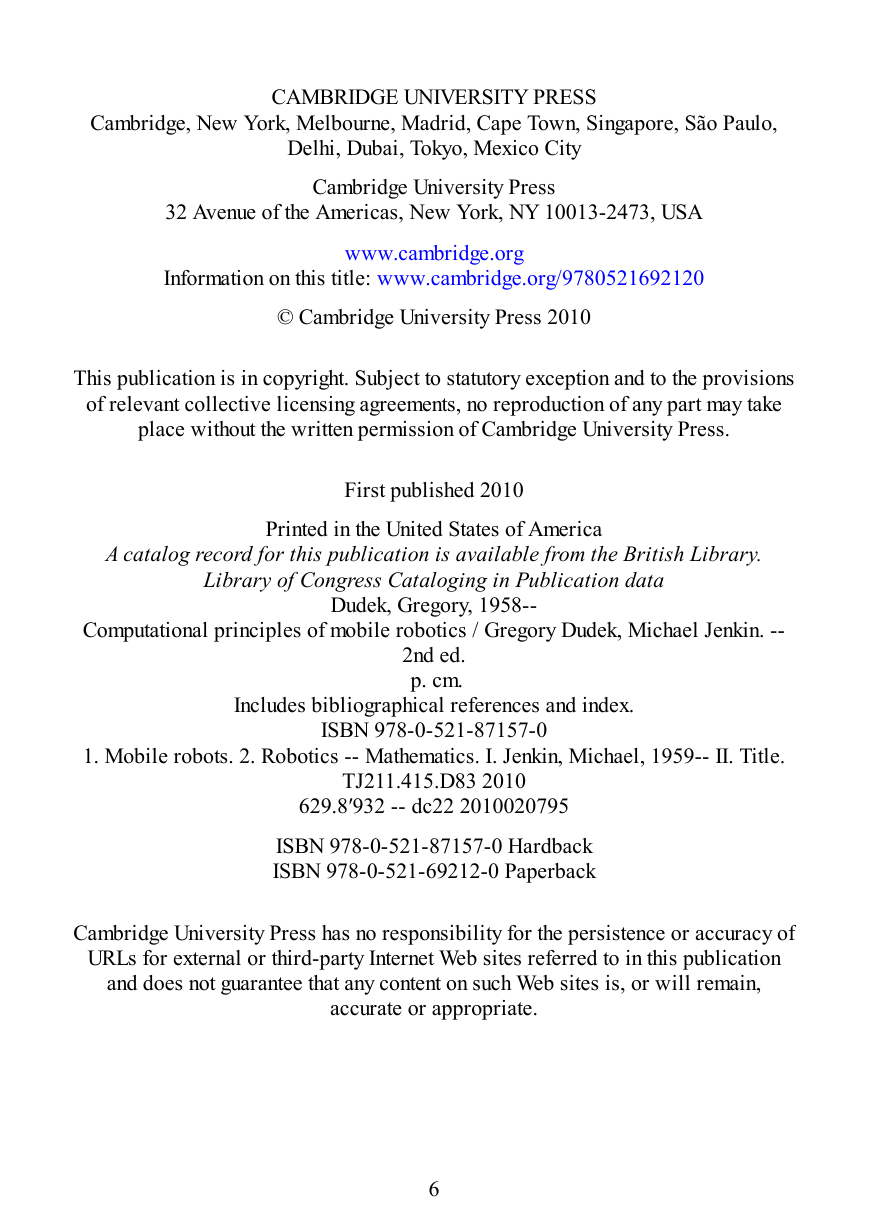Computational Principles of Mobile Robotics
Title page
Copyright page
Dedication
Contents
Acknowledgments
Preface to the Second Edition
1 Overview and Motivation
1.1 From Mechanisms to Computation
1.2 Historical Context
1.3 Biological Inspiration
1.4 Operational Regimes
1.5 Operational Modes
1.6 A Guide to This Book
1.7 Further Reading
1.8 Problems
2 Fundamental Problems
2.1 Path Planning for a Point Robot
2.2 Localization for a Point Robot
2.3 Sensing for a Point Robot
2.4 Mapping for a Point Robot
2.5 SLAM for a Point Robot
2.6 Looking Forward
2.7 Further Reading
2.8 Problems
Part One: Locomotion and Perception
3 Mobile Robot Hardware
3.1 Locomotion
3.2 Off-Board Communication
3.3 Processing
3.4 Further Reading
3.5 Problems
4 Non-Visual Sensors and Algorithms
4.1 Basic Concepts
4.2 Contact Sensors: Bumpers
4.3 Inertial Sensors
4.4 Infrared Sensors
4.5 Sonar
4.6 Radar
4.7 Laser Rangefinders
4.8 Satellite-Based Positioning
4.9 Data Fusion
4.10 Biological Sensing
4.11 Further Reading
4.12 Problems
5 Visual Sensors and Algorithms
5.1 Visual Sensors
5.2 Object Appearance and Shading
5.3 Signals and Sampling
5.4 Image Features and Their Combination
5.5 Obtaining Depth
5.6 Active Vision
5.7 Other Sensors
5.8 Biological Vision
5.9 Further Reading
5.10 Problems
Part Two: Representation and Planning
6 Representing and Reasoning About Space
6.1 Representing Space
6.2 Representing the Robot
6.3 Path Planning for Mobile Robots
6.4 Planning for Multiple Robots
6.5 Biological Mapping
6.6 Further Reading
6.7 Problems
7 System Control
7.1 Horizontal Decomposition
7.2 Vertical Decomposition
7.3 Hybrid Control Architectures
7.4 Middleware
7.5 High-Level Control
7.6 Alternative Control Formalisms
7.7 The Human--Robot Interface
7.8 Mobile Robot Software Development as Experimentation
7.9 Standard Software Toolkits
7.10 Further Reading
7.11 Problems
8 Pose Maintenance and Localization
8.1 Simple Landmark Measurement
8.2 Servo Control
8.3 Recursive Filtering
8.4 Non-Geometric Methods: Perceptual Structure
8.5 Correlation-Based Localization
8.6 Global Localization
8.7 Biological Approaches to Localization
8.8 Further Reading
8.9 Problems
9 Mapping and Related Tasks
9.1 Sensorial Maps
9.2 Geometric Maps
9.3 Topological Maps
9.4 Exploration
9.5 Further Reading
9.6 Problems
10 Robot Collectives
10.1 Categorizing Collectives
10.2 Control Architectures
10.3 Collective Communication
10.4 Sensing
10.5 Planning for Action
10.6 Formation Control
10.7 Localization
10.8 Mapping
10.9 Further Reading
10.10 Problems
11 Robots in Practice
11.1 Delivery Robots
11.2 Intelligent Vehicles
11.3 Robots for Survey and Inspection
11.4 Mining Automation
11.5 Space Robotics
11.6 Autonomous Aircraft
11.7 Military Reconnaissance
11.8 Bomb/Mine Disposal
11.9 Underwater Inspection
11.10 Agriculture/Forestry
11.11 Aids for the Disabled
11.12 Entertainment
11.13 Domestic Robots
11.14 Further Reading
11.15 Problems
12 The Future of Mobile Robotics
12.1 Locomotion
12.2 Sensors
12.3 Control
12.4 System Integration
12.5 Standardization
12.6 Future Directions
Appendix A: Probability and Statistics
A.1 Probabililty
A.2 Some Simple Statistics
A.3 Further Reading
A.4 Problems
Appendix B: Linear Systems, Matrices, and Filtering
B.1 Linear Algebra
B.2 Matrix Algebra
B.3 Signals and Systems
B.4 Fourier Theory
B.5 Sampling and the Nyquist Theorem
B.6 Further Reading
B.7 Problems
Appendix C: Markov Models
C.1 Discrete Markov Process
C.2 Hidden Markov Models
C.3 Markov Decision Process
C.4 POMDP
C.5 Further Reading
C.6 Problems
Bibliography
Index
















 2023年江西萍乡中考道德与法治真题及答案.doc
2023年江西萍乡中考道德与法治真题及答案.doc 2012年重庆南川中考生物真题及答案.doc
2012年重庆南川中考生物真题及答案.doc 2013年江西师范大学地理学综合及文艺理论基础考研真题.doc
2013年江西师范大学地理学综合及文艺理论基础考研真题.doc 2020年四川甘孜小升初语文真题及答案I卷.doc
2020年四川甘孜小升初语文真题及答案I卷.doc 2020年注册岩土工程师专业基础考试真题及答案.doc
2020年注册岩土工程师专业基础考试真题及答案.doc 2023-2024学年福建省厦门市九年级上学期数学月考试题及答案.doc
2023-2024学年福建省厦门市九年级上学期数学月考试题及答案.doc 2021-2022学年辽宁省沈阳市大东区九年级上学期语文期末试题及答案.doc
2021-2022学年辽宁省沈阳市大东区九年级上学期语文期末试题及答案.doc 2022-2023学年北京东城区初三第一学期物理期末试卷及答案.doc
2022-2023学年北京东城区初三第一学期物理期末试卷及答案.doc 2018上半年江西教师资格初中地理学科知识与教学能力真题及答案.doc
2018上半年江西教师资格初中地理学科知识与教学能力真题及答案.doc 2012年河北国家公务员申论考试真题及答案-省级.doc
2012年河北国家公务员申论考试真题及答案-省级.doc 2020-2021学年江苏省扬州市江都区邵樊片九年级上学期数学第一次质量检测试题及答案.doc
2020-2021学年江苏省扬州市江都区邵樊片九年级上学期数学第一次质量检测试题及答案.doc 2022下半年黑龙江教师资格证中学综合素质真题及答案.doc
2022下半年黑龙江教师资格证中学综合素质真题及答案.doc